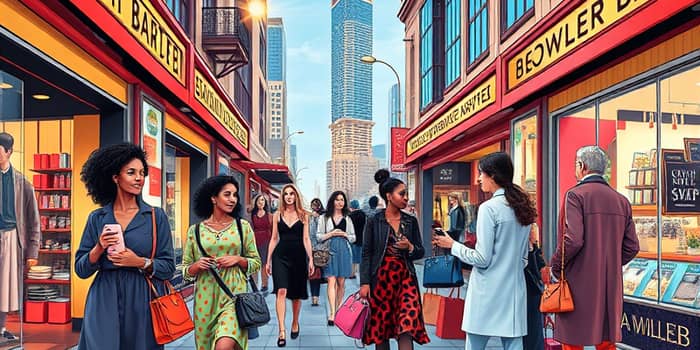
The global luxury landscape is undergoing a profound transformation in 2025, as new regions surge ahead with unprecedented demand. While traditional centers like Europe, the US, and China face headwinds, emerging markets are achieving record-breaking sales in emerging markets that are reshaping industry dynamics.
In 2024, global personal luxury goods sales totaled €364 billion ($419 billion), marking a contraction from the post-pandemic peak. Projections suggest another 2–5% decline in 2025 due to US tariffs and weakening demand in China.
Despite this softening, the sector remains resilient: luxury spending has rebounded quickly following past crises, including the 2008 recession and the COVID-19 pandemic. From 2019 to 2024, global luxury spending still rose by 28%, staying above pre-pandemic levels.
Major consultancies forecast a return to growth, with annual expansion of 5–9% leading to a €2.5 trillion ($2.8 trillion) market by 2030. This long-term outlook underpins continued investment by top brands.
While heritage markets cool, emerging regions are gaining momentum and attracting significant brand interest. Observers label these areas the new engines of growth.
Collectively, these regions could add 50 million new upper-middle-class consumers by 2030, offsetting declines elsewhere.
India’s luxury market is projected to grow by over 5% in 2025, with some private estimates forecasting double-digit annual gains over the next decade. Consumers in these markets are not just purchasing staples but also seeking rare pieces and personalized services.
However, brand performance varies widely based on strategy and creativity. In Q1 2025, Prada Group reported a 13% revenue increase to €1.34 billion, showcasing the power of strong creative strategies and market focus. Conversely, Gucci faced a 24% revenue decline to €1.6 billion, underlining that not every label benefits equally from global shifts.
Shoppers in emerging markets display distinct tastes that brands must adapt to in order to thrive:
This evolution demands brands deliver not only exquisite leather goods and fine jewelry, but also exclusive, tailored customer journeys that resonate with local traditions and values.
Top labels are accelerating investments in emerging markets through targeted store openings, tailored collections, and digital engagement. For instance, Louis Vuitton’s landmark Indian store opened in 2023, signaling a bold commitment to South Asian consumers.
Omnichannel strategies have become indispensable. By integrating online platforms with immersive in-store experiences, brands meet consumers where they live and shop, offering virtual consultations, localized content, and same-day deliveries in key cities.
Early loyalty building is another priority. Through workshops, private events, and educational series, brands aim for early-market education to foster loyalty among first-time buyers who represent tomorrow’s high-spending clientele.
Despite strong growth potential, operating in emerging markets involves navigating a complex array of risks:
Brands must balance premium pricing with perceived value and maintain transparent supply chains to uphold trust.
Looking ahead, the luxury sector is shifting from high-volume, rapid expansion to sustainable and regionally-tailored growth strategies. Brands that master the nuances of emerging markets will be well positioned to capitalize on new consumer wealth.
Historic recoveries after downturns highlight the market’s rebound capacity, driven by innovative product introductions and the creation of fresh consumer classes. Luxury executives emphasize that cultivating early relationships in untapped geographies is a strategic imperative.
To succeed, brands must strike a balance between exclusivity and accessibility, uphold environmental and social standards, and continue refining digital and in-person touchpoints.
As traditional markets face headwinds, emerging regions are fueling rapid expansion of affluent consumers that is setting new sales records. Companies that embrace local insights, invest in omnichannel excellence, and maintain authentic brand narratives will define the next era of luxury success.
The industry’s future lies in adaptability, creativity, and the unwavering pursuit of excellence—qualities that have always defined true luxury.
References













